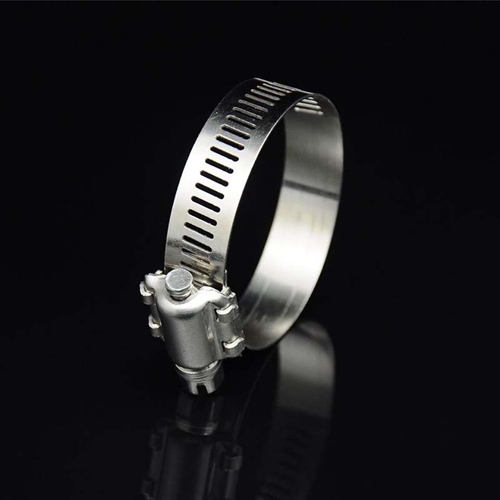- Phone:+86-17331948172 +86-0319-8862898
- E-mail: inquiry@puxingclamp.com
Jan . 01, 2025 17:49 Back to list
Interlocking Hose Clamp Manufacturers and Production Insights for Optimal Performance
Interlocking Hose Clamp Factories Pioneering a New Standard in Hose Management
In the world of industrial and mechanical applications, hose management is critical to ensuring safety, efficiency, and durability. One of the essential components in this domain is the hose clamp. Among the various types of hose clamps, interlocking hose clamps are gaining considerable traction due to their innovative design and effectiveness. As a result, interlocking hose clamp factories are playing a crucial role in redefining standards in this sector.
The Importance of Hose Clamps
Hose clamps are used to secure hoses onto fittings, preventing fluid leaks and maintaining pressure within the system. Improperly secured hoses can lead to catastrophic failures, making the reliability of hose clamps paramount in industries such as automotive, aerospace, construction, and manufacturing. The need for high-quality, durable, and easy-to-install hose clamps has led to a surge in demand for interlocking hose clamp designs.
What are Interlocking Hose Clamps?
Interlocking hose clamps are designed with a unique mechanism that allows for a more secure fit compared to traditional clamps. The interlocking design ensures that the clamp remains firmly in place, even under extreme pressure or temperature fluctuations. This advanced design reduces the risk of slippage and leakage, making it ideal for high-performance applications. Furthermore, interlocking hose clamps can be adjusted easily, allowing for quick installations and modifications when necessary.
Manufacturing Process
Interlocking hose clamp factories utilize advanced manufacturing techniques to produce high-quality clamps. The process typically starts with selecting the right materials, which must be durable, corrosion-resistant, and capable of withstanding varying temperatures. Common materials used include stainless steel, carbon steel, and various plastic composites.
The manufacturing process involves several steps
1. Material Preparation Raw materials are cut and treated to ensure they meet specific thickness and durability requirements. 2. Forming The materials are shaped into the desired clamp design using precision tooling and machinery. This step is critical as it determines the interlocking features' accuracy and reliability.
interlocking hose clamp factories

4. Quality Control Rigorous quality control measures are implemented to ensure that every clamp meets industry standards and specifications. This may involve tensile testing, dimensional inspections, and surface condition evaluations.
5. Packaging and Distribution After passing quality checks, the clamps are packaged and prepared for distribution to various markets, ensuring they reach end-users in optimal condition.
Innovation in Design and Functionality
Interlocking hose clamp factories are at the forefront of innovation, constantly researching and developing new designs that cater to evolving industry needs. Companies are exploring smart hose clamps with sensors that monitor pressure and temperature, providing real-time data to operators. Such advancements can significantly improve operational efficiency and prevent failures before they occur.
Additionally, factories are focusing on environmentally friendly manufacturing practices. There is an increasing demand for sustainable materials and production techniques that minimize waste and reduce carbon footprints. Factories that adopt these practices not only contribute to a healthier planet but also appeal to environmentally conscious consumers.
The Future of Interlocking Hose Clamps
As industries continue to evolve, the demand for effective and reliable hose management solutions will only increase. Interlocking hose clamp factories are positioned to meet this demand by leveraging advanced technologies and innovative designs. The integration of automation in manufacturing processes will enhance production efficiency while maintaining high-quality standards.
As competition intensifies in the global market, manufacturers that prioritize research and development, customer feedback, and sustainability will likely lead the way. Interlocking hose clamps are set to become a standard component in various applications due to their reliability and ease of use.
Conclusion
Interlocking hose clamp factories are making significant strides in improving hose management solutions. By focusing on quality, innovation, and sustainability, these factories are not only enhancing the performance of hose clamps but also contributing positively to various industries. The future looks promising for interlocking hose clamps, and their manufacturers are sure to play a crucial role in shaping the future of hose management.
-
Large Stainless Steel Adjustable American Type Hose Clamp - Hebei Pux Alloy Technology Co., Ltd|Corrosion Resistance&High Breaking Torque
NewsJul.30,2025
-
Large Stainless Steel Adjustable American Type Hose Clamp - Hebei Pux Alloy Technology Co., Ltd
NewsJul.30,2025
-
Large Stainless Steel Adjustable American Type Hose Clamp - Hebei Pux Alloy Technology Co., Ltd|Corrosion Resistance&Industrial Applications
NewsJul.30,2025
-
Large Stainless Steel Adjustable American Type Hose Clamp-Hebei Pux Alloy Technology Co., Ltd|Corrosion Resistance, Adjustable Design
NewsJul.30,2025
-
Large Stainless Steel Adjustable American Type Hose Clamp - Hebei Pux Alloy Technology Co., Ltd. | High Breaking Torque & Corrosion Resistance
NewsJul.30,2025
-
Large Stainless Steel Adjustable American Type Hose Clamp - Hebei Pux Alloy Technology Co., Ltd
NewsJul.30,2025




